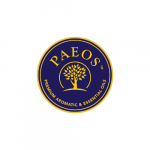What Are Essential Oils, and How Are They Produced?
What Are Essential Oils, and How Are They Produced?
Essential oils are volatile compounds produced by a number of plants. Depending on the plant, these oils may be stored in the roots, wood, bark, resin, leaves, twigs, beans, nuts, flowers, stems, rinds, berries, or seeds. Plants use essential oils as a carrier for the removal of toxins from their systems; essential oils are also used to deter enemies, e.g., herbivores and insects that would want to eat them, or other plants that would otherwise encroach on their living space; or to attract specific insects to facilitate pollination. It is also thought that the evaporation of these oils is used by some plants for thermal regulation. Essential oils have very complex structures and can consist of up to several hundred different constituents.
METHODS OF ESSENTIAL OIL PRODUCTION
There are actually quite a number of different ways to extract aromatic compounds from plants. However, for the production of true essential oils that are meant to be used for aroma-therapeutic purposes, there are really only 3 relevant methods. Please note that all descriptions below are rather simplified explanations of how the processes work. Technically, there is quite a bit more to each of them.
1. Steam Distillation
This is the most commonly used method to produce essential oils, but it is not possible to use this efficiently for all kinds of essential oils.
- A container (usually made of steel) is filled with plant material.
- Steam is injected from the bottom into the container. From there the steam moves through the plant material, in the process rupturing the cells that hold the aromatic compounds, and thus picking up and transporting these volatile molecules with it.
- The mixture of water vapor and plant molecules will then exit through a pipe at the top of the container, and into a condenser. There the vapor/molecules mix is cooled down to a liquid state.
- Since essential oils and water do not mix, this liquid will now consist of two layers, water, and essential oil. The latter will either float on top of the water or sink to the bottom, depending on the density of the respective oil. Either way, the two liquids can now be easily separated.
2. Mechanical expression
This method is used for extracting essential oils from the peels of citrus fruits (e.g., lemon, orange, grapefruit). The whole fruits are put into a rotating container / drum, which mechanically pierces / slices / scrapes the rinds (scarification). This way the cells in the rinds containing the essential oils are damaged, releasing the oils. Water is then used to rinse the fruits, and the water / essential oil mix is then directed into a centrifuge; spinning at high revolutions will separate the oils from the water and from any solid pieces, or fruit juice, which may also be present.
3. CO2 extraction
CO2 extraction is an interesting and rather new way, but it is also still very costly to do. It is basically a solvent extraction method but using totally harmless CO2 as the solvent rather than e.g., hexane, or alcohol. The result of this process, whereby CO2 is pumped at extremely high pressures (in a liquid state) into the vessel containing the plant material, is an oil similar to a steam-distilled essential oil, but which also contains a number of heavier, non-volatile molecules. CO2 extracts thus have an oil profile more similar to the original oil in the plants. The CO2, by the way, can be easily and completely removed from the oil, and be re-used.






